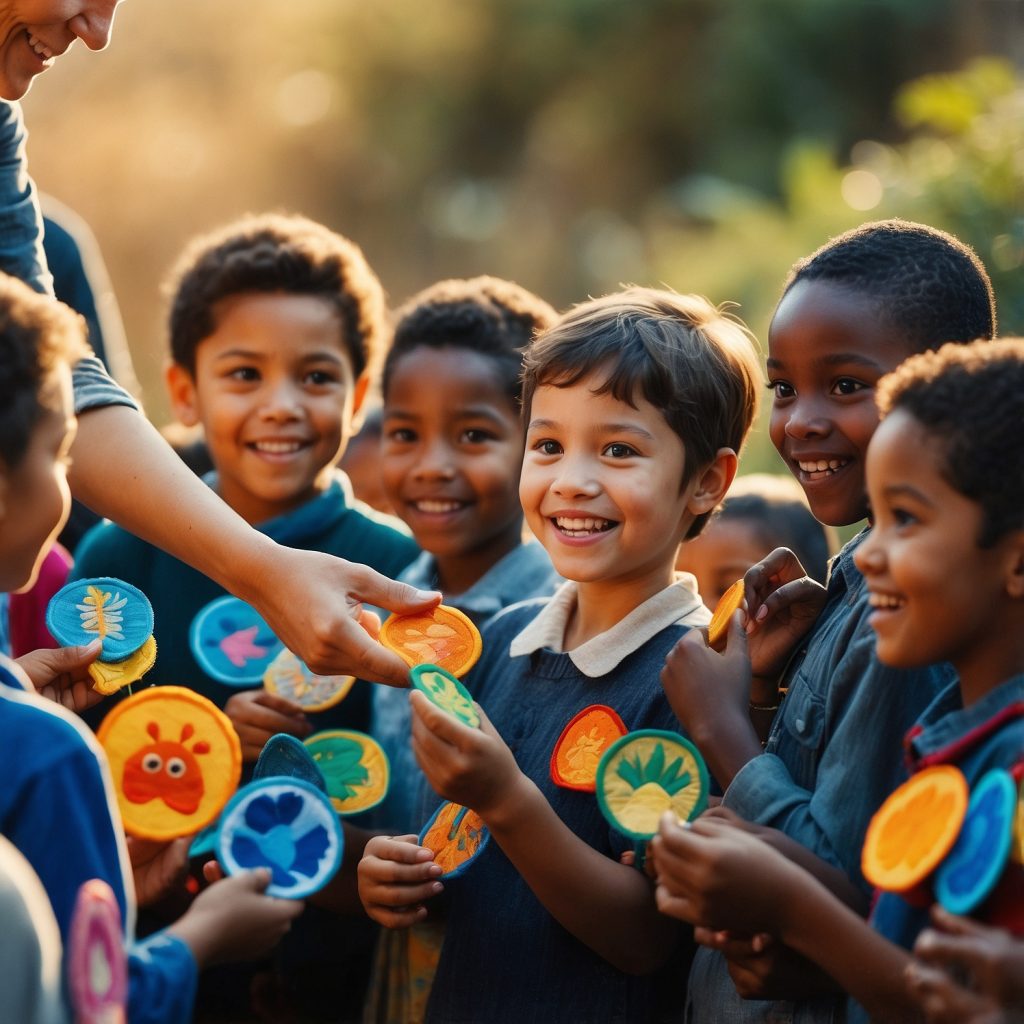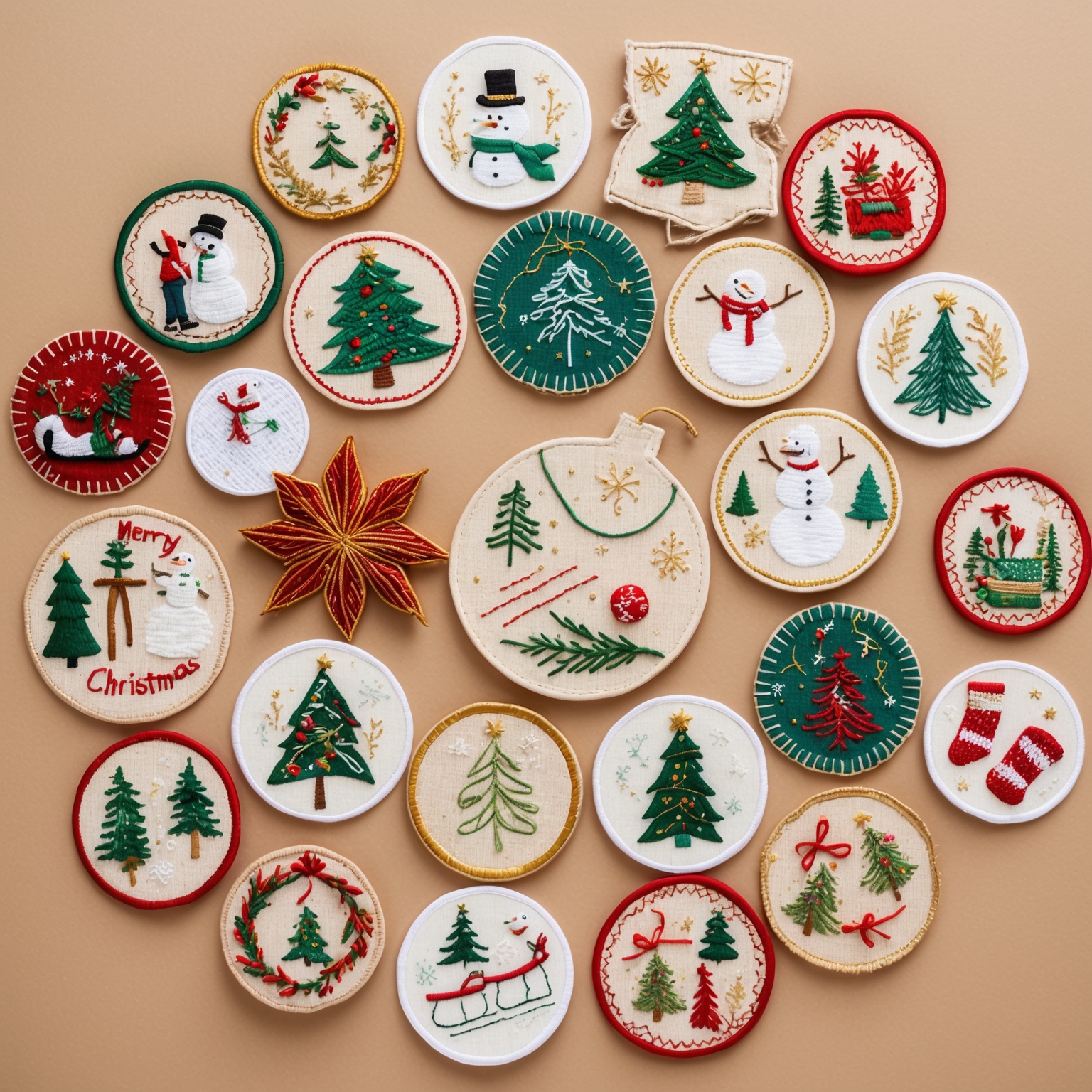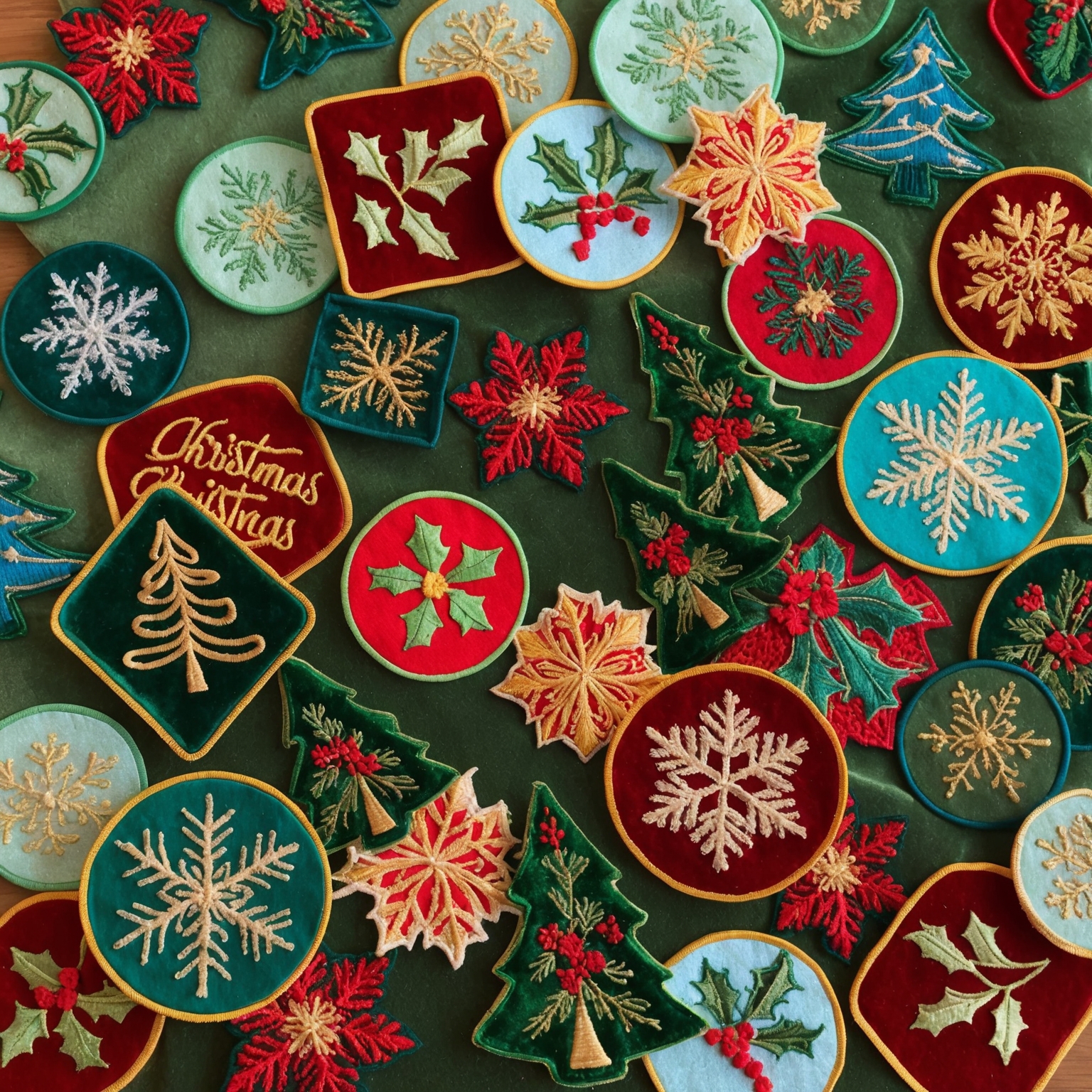Youth programs play a crucial role in the development of children and teenagers. Whether it’s scouting, sports teams, educational camps, or community service clubs, these programs provide structured opportunities for young people to develop skills, build character, and foster a sense of community. Within these programs, one simple yet highly effective tool stands out: custom youth patches.
Custom patches have been used for decades as symbols of achievement, participation, and belonging. From scouting badges to team patches, these small embroidered pieces serve as a tangible representation of growth, accomplishment, and progress. In youth programs, custom patches are not just decorative elements—they are powerful tools that guide young participants along their journey, motivate them to achieve more, and strengthen their sense of identity and purpose within their respective groups.
In this article, we will explore the essential role that custom patches play in youth programs. We’ll look at how they serve as markers of achievement, encourage teamwork, and provide motivation for personal development. Additionally, we will dive into the historical significance of patches in youth organizations and discuss how they continue to inspire and guide the next generation. Finally, we will examine the process of designing and creating custom patches that are meaningful and impactful for young participants.
The History of Patches in Youth Programs
The use of custom patches in youth programs dates back more than a century, with one of the earliest and most iconic examples being the Boy Scouts and Girl Scouts. Scouting organizations have long used patches—known as badges—to recognize the completion of specific tasks or the mastery of various skills. These patches, awarded in a ceremonial setting, hold significant meaning for the scouts who earn them. The patches represent hard work, perseverance, and a commitment to learning new things.
In the early 1900s, when scouting was first established, custom patches were introduced as part of a broader effort to motivate young participants to engage in outdoor activities, learn essential life skills, and develop leadership qualities. Badges were awarded for everything from knot-tying and first aid to camping and community service. Over time, the tradition of awarding patches spread to other youth programs, such as sports teams, summer camps, after-school clubs, and volunteer organizations.
Today, custom patches are used in a wide range of youth programs to mark milestones, recognize accomplishments, and instill a sense of pride and belonging. The visual representation of achievement that a patch provides is a timeless tool for youth development, offering young people a sense of progression, guidance, and motivation.
The Role of Custom Patches in Youth Development
In the context of youth programs, custom patches play a multifaceted role. They are more than just rewards—they are symbols that foster learning, growth, and teamwork. Let’s explore the various ways in which custom patches serve as tools for guidance and achievement in youth programs.
1. Motivating Achievement and Skill Development
One of the primary functions of custom patches in youth programs is to motivate participants to work toward specific goals and achievements. Earning a patch serves as a reward for mastering a skill or completing a challenge, reinforcing the idea that hard work leads to success. This tangible symbol of accomplishment encourages young people to continue learning, growing, and pushing their limits.
In scouting programs, for example, patches are awarded for mastering a wide range of skills, including survival techniques, leadership, environmental conservation, and community service. These patches represent a visual record of the scout’s progression through the program, marking important milestones along their journey.
Beyond scouting, custom patches are used in other youth programs to celebrate achievements in areas such as sports, academics, the arts, and volunteer work. A basketball team might award patches for teamwork or sportsmanship, while an after-school robotics club might give patches to students who complete specific projects or win competitions. These patches serve as constant reminders of what the participant has accomplished and motivate them to continue striving for excellence.
2. Building Confidence and Self-Esteem
Youth programs are often designed to help young participants develop confidence and self-esteem. Earning custom patches plays a significant role in this process, as they serve as visible reminders of personal growth and achievement. Every time a young person earns a patch, they gain a sense of accomplishment that reinforces their belief in their abilities.
This boost in confidence can have far-reaching effects on other aspects of a young person’s life. Knowing that they are capable of achieving difficult tasks or mastering new skills can inspire them to take on challenges outside of the youth program, such as excelling in school or participating in new activities.
Moreover, the act of earning a patch provides validation and recognition, which is crucial for building a positive self-image. For young people, especially those in their formative years, being recognized for their efforts by their peers and mentors can significantly enhance their sense of self-worth.
3. Encouraging Teamwork and Collaboration
Many youth programs focus on developing teamwork and collaboration skills, and custom patches can play an important role in fostering a sense of unity among participants. In group settings, patches are often awarded to entire teams or groups of participants who work together to achieve a common goal. This promotes the idea that success is not just about individual effort but also about working together and supporting one another.
For example, in a summer camp setting, a group of campers might earn a patch for successfully completing a team-building challenge, such as constructing a raft or navigating an obstacle course. In a sports program, a team might receive a patch for showing exemplary sportsmanship during a game or tournament. These patches become symbols of the collective effort and collaboration that led to the achievement.
By encouraging teamwork and shared accomplishments, custom patches help young participants understand the value of working together toward a common goal. This lesson is not only essential for success within the program but also for success in school, work, and life.
4. Providing Guidance and Structure
Youth programs thrive on providing structure and clear paths for development. Custom patches offer a visual representation of this structure, guiding participants through various stages of learning and achievement. In programs where patches are earned sequentially or for completing specific challenges, they serve as milestones that help participants understand their progress and set goals for the future.
For example, in scouting programs, participants might start with beginner-level patches that teach basic skills, such as tying knots or setting up a tent. As they progress through the program, they work toward more advanced patches that require higher levels of skill and responsibility, such as earning badges for leadership or community service. This structured approach to earning patches provides a roadmap for participants, helping them see the steps they need to take to reach their goals.
In other youth programs, patches might be used to guide participants through a series of challenges or projects. For example, an environmental club might award patches for completing different stages of a conservation project, from planning to implementation to results. By earning patches along the way, participants are guided through the process, with each patch marking a significant step forward.
5. Fostering a Sense of Belonging and Identity
In youth programs, custom patches do more than recognize individual achievements—they also help foster a sense of belonging within a larger community. When young people wear patches that represent their participation in a program, team, or organization, they are expressing their identity as part of that group. This sense of belonging is crucial for building positive relationships, creating a supportive environment, and helping young participants feel connected to their peers.
Wearing patches that signify membership in a group also reinforces the idea that the individual is part of something bigger than themselves. For example, a scout who wears their troop’s emblem alongside their merit badges not only showcases their personal accomplishments but also their pride in being part of the troop. Similarly, a young athlete who wears a team patch on their uniform feels a connection to their teammates and their shared goals.
The sense of identity that custom patches provide is especially important during adolescence, a time when young people are forming their sense of self and seeking affirmation from their peers. Patches help solidify their role within their respective programs, giving them a sense of purpose and pride.
Designing Meaningful Custom Patches for Youth Programs
Creating custom patches for youth programs requires thoughtful design. These patches must not only look appealing but also carry meaning for the participants who earn and wear them. The design process involves selecting symbols, colors, and text that resonate with the values and goals of the program. Here are some key elements to consider when designing custom patches for youth programs:
1. Incorporating Relevant Symbols
Symbols are a key part of any custom patch design, as they visually communicate the theme, purpose, or values of the program. In youth programs, these symbols often represent skills, achievements, or experiences. For example, a patch awarded for completing a wilderness survival course might include symbols such as trees, mountains, or a campfire, while a patch for community service might feature images of helping hands or a globe to represent global citizenship.
Incorporating relevant symbols not only enhances the visual appeal of the patch but also helps young participants immediately recognize what the patch represents. The more meaningful the symbols are to the participants, the more personal and valuable the patch becomes.
2. Choosing Colors that Represent the Program
Colors play an important role in patch design, and the right color choices can make a patch visually striking and meaningful. For example, certain colors may be associated with specific groups or teams. A soccer team might use their team’s colors in the patch design, while a conservation program might choose green to symbolize environmental protection.
In addition to representing the program, colors can also convey emotions and values. Bright, bold colors like red or yellow can evoke energy and excitement, while softer tones like blue and green might suggest calmness or a connection to nature. Choosing colors that align with the goals and mission of the program ensures that the patch resonates with participants.
3. Including the Program’s Logo or Name
Including the program’s logo, name, or slogan on the custom patch helps strengthen the participant’s connection to the group or organization. Whether it’s a scout troop’s emblem, a sports team’s logo, or the name of a summer camp, incorporating these elements into the patch design ensures that the patch serves as a reminder of the participant’s membership and experiences within the program.
For example, a patch that features a troop’s logo alongside symbols of achievement reinforces both the individual’s accomplishments and their identity as part of the troop. Similarly, a patch awarded at the end of a summer camp might feature the camp’s name as a keepsake, reminding participants of their time spent there.
4. Creating a Series of Patches for Different Achievements
Many youth programs benefit from having a series of patches that participants can earn as they progress. Designing patches that are part of a series—each representing a different level of achievement or skill—creates a clear progression for participants to follow. This series of patches acts as a roadmap, encouraging participants to set goals, challenge themselves, and work their way toward higher levels of accomplishment.
For example, a youth robotics program might design patches that represent different levels of proficiency, from beginner to advanced. A participant might start with a patch that represents basic coding skills, then earn additional patches for completing specific projects, competing in challenges, or mentoring younger participants. These patches create a sense of progression and motivate participants to keep advancing their skills.
5. Personalizing Patches for Special Achievements
While many patches in youth programs are designed for group-wide distribution, personalizing certain patches for special achievements adds a unique layer of meaning. A personalized patch might include the participant’s name, the date of the achievement, or details about the specific challenge they completed.
For example, a patch commemorating a leadership role in a youth organization could include the participant’s title (such as “Team Leader” or “Scout Patrol Leader”) and the year they served. This level of personalization turns the patch into a meaningful keepsake that celebrates the participant’s individual contributions to the program.
Real-World Examples of Custom Patches in Youth Programs
To see the impact of custom patches in youth programs, let’s explore a few real-world examples of how these patches are used to guide and motivate young participants.
Boy Scouts of America: Merit Badges
The Boy Scouts of America (BSA) is one of the most well-known organizations to use custom patches as part of its program. In the BSA, scouts earn merit badges for mastering specific skills, such as first aid, camping, environmental science, and citizenship. These badges are sewn onto the scout’s sash or uniform and serve as a visual record of their progression through the program.
Each merit badge is thoughtfully designed to reflect the skills it represents. For example, the First Aid merit badge features a red cross, while the Camping merit badge includes a tent and campfire. These symbols help scouts and others recognize what the badge represents at a glance.
The BSA’s use of patches has inspired generations of scouts to set goals, challenge themselves, and earn recognition for their achievements.
Girls on the Run: Achievement Patches
Girls on the Run (GOTR) is a youth development program that combines physical activity with lessons on self-esteem, teamwork, and leadership. Throughout the program, participants set personal fitness goals and work toward completing a celebratory 5K race at the end of the season.
As part of the program, participants receive custom patches that recognize their achievements along the way. These patches are awarded for completing key milestones, such as setting personal fitness goals, showing leadership during group activities, and crossing the finish line at the 5K race. Each patch represents a significant step in the participant’s journey toward building confidence and achieving personal growth.
Environmental Youth Camps: Conservation Patches
Many environmental youth camps use custom patches to promote conservation efforts and recognize participants for their contributions to protecting the environment. For example, a wilderness conservation camp might award patches for completing projects such as planting trees, cleaning up rivers, or restoring wildlife habitats.
These patches often feature nature-themed designs, such as trees, mountains, or wildlife, and they serve as a way for participants to remember their efforts to protect the environment. By earning conservation patches, young participants are motivated to take action in their communities and develop a lifelong commitment to environmental stewardship.
Custom Patches as Tools for Guiding and Inspiring the Next Generation
Custom patches are far more than decorative items in youth programs. They serve as powerful tools for guiding, motivating, and inspiring young people to achieve their goals, build confidence, and work together as part of a community. From scouting to sports teams to environmental clubs, patches provide a visual representation of the progress, skills, and values that youth programs aim to instill in their participants.
As youth programs continue to evolve, custom patches will remain an essential tool for recognizing achievement and encouraging personal growth. Whether awarded for mastering a skill, completing a challenge, or contributing to a group effort, these patches carry meaning that goes far beyond their embroidered threads. For the young people who earn them, custom patches represent the journey, the hard work, and the memories that shape their path to becoming confident, capable, and empowered individuals.
If you are interested in purchasing high-quality custom patches, feel free to call us at 866-903-4875 or fill out one of our FREE quotes here.





